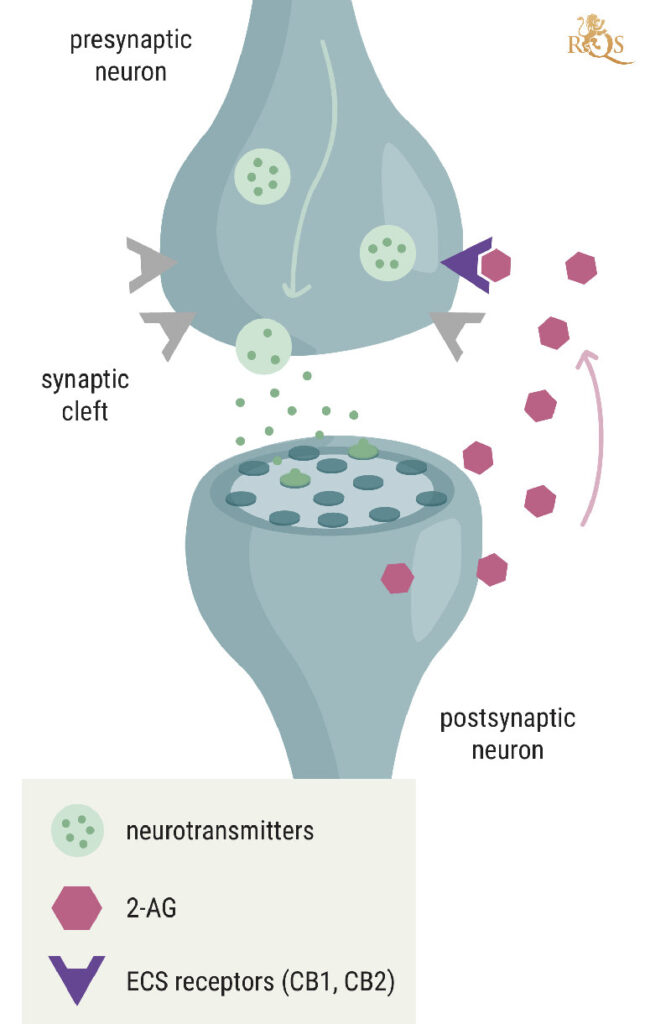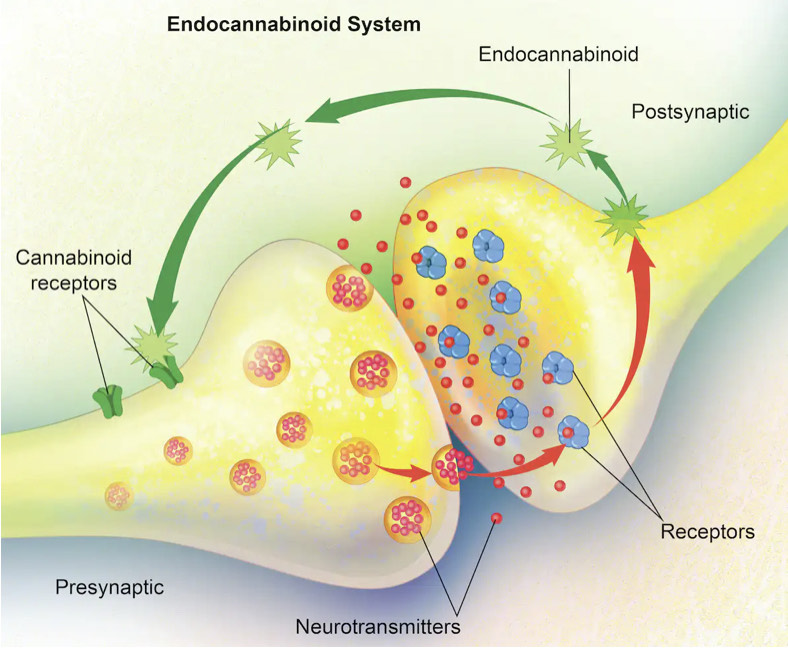Now that we have covered the endocannabinoid system and it’s receptors it is time to learn about Endocannabinoids or endogenous cannabinoids. These cannabinoids are naturally occurring neurotransmitters which are lipid-based chemical messengers that send signals between nerve cells.
The two main endocannabinoids are 2-ag and anandamide.
2-ag stands for 2-Arachidonoylglycerol.
2-ag is a full agonist at cb1 and cb2 receptors, meaning it binds or activates fully at the receptors. Endocannabinoid action at the receptors can contribute to the resolution of acute pain. These endocannabinoids also have analgesic benefit to neuropathic, gastrointestinal, inflammatory, and chemotherapy-induced pain.
2-AG has a higher concentration in the nervous tissue and may have a greater role in analgesia and antinociception when compared to anandamide.
2-ag is formed from omega 6 fatty acid, arachidonic acid, and glycerol.
2-ag is present in high levels in the central nervous system.

Now let’s talk about Anandamide (ANA) also known as N-arachidonoylethanolamine (AEA) which was the first endocannabinoid to be discovered.
Anandamide is a partial agonist at the receptors, meaning it only activates or binds partially at the receptors. This binding of anandamide at the CB1/CB2 receptors seems to play a role in neurotransmission of dopamine, serotonin, GABA, and glutamate.
Anandamide is a fatty acid neurotransmitter, a chemical messenger pathway for fatty acids.
Anandamide isn’t exclusive to the human body it has also been found in plants including small amounts in chocolate!
Sometimes our bodies do not make enough of these cannabinoids that is where phytocannabinoids come in. We will be discussing this in our next educational blog. Stay Tuned!!


